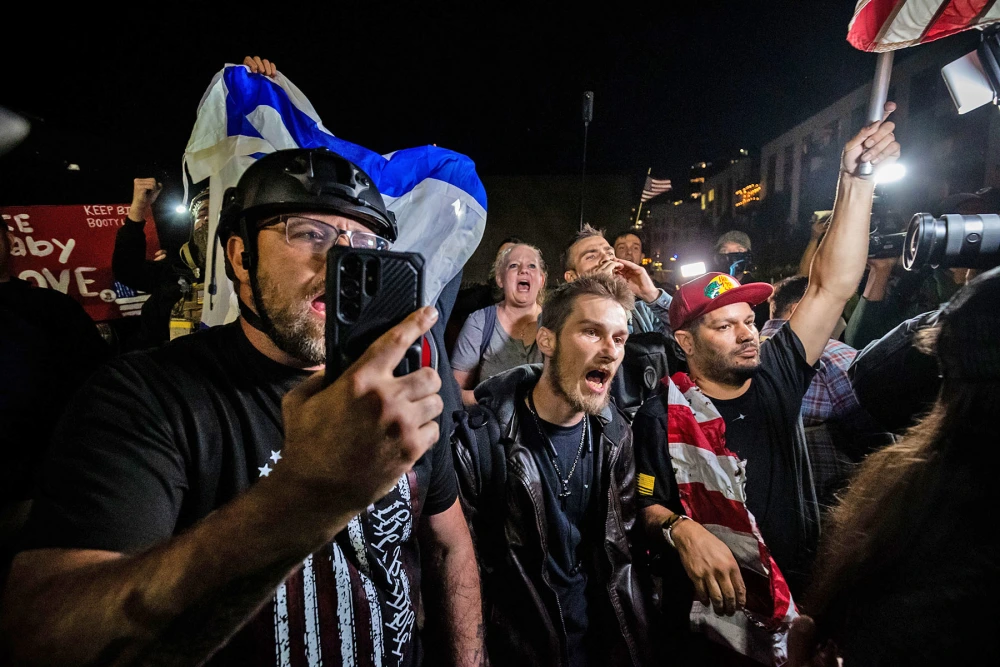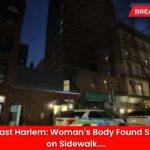PORTLAND, Ore. — The streets outside Portland’s U.S. Immigration and Customs Enforcement (ICE) facility have become a focal point in the country’s political culture war — and a new stage for MAGA-aligned influencers seeking both headlines and influence.
In recent weeks, conservative media figures and right-wing social media personalities have descended on Oregon’s largest city, documenting and, at times, directly clashing with demonstrators protesting President Donald Trump’s immigration policies and his attempt to federalize the Oregon National Guard.
Among them is Nick Sortor, a 27-year-old Trump supporter with more than 1.2 million followers on X, whose Portland arrest and subsequent White House appearance highlight how deeply intertwined the Trump administration and MAGA media ecosystem have become.
Also Read
From Jail to the White House
Sortor’s dramatic week began on Oct. 2, when Portland police arrested him on suspicion of disorderly conduct following an altercation outside the ICE facility. Though prosecutors later declined to pursue charges, the arrest briefly made him a martyr among Trump supporters.
Just six days later, Sortor was in Washington, D.C., seated feet away from President Trump during a White House roundtable featuring right-wing journalists who had covered Portland’s protests.
“It was not fun sitting in that jail, but I’m glad to see what has come of it,” Sortor told Trump during the livestreamed event.
The exchange symbolized what experts call a symbiotic relationship between the Trump administration and online conservative influencers: the former amplifies their content, while the latter fuels public outrage and political narratives favorable to Trump’s hardline immigration stance.
Right-Wing Media Mobilizes in Portland
At least a dozen out-of-town conservative journalists and streamers — including figures from The Post Millennial, The Blaze, and Turning Point USA’s Frontlines — have been spotted in Portland since late September.
“This is now a full-blown information war,” said Jonathan Choe, a Frontlines correspondent from Seattle. “Being on the front lines is more important than ever.”
The anti-ICE demonstrations, which have continued almost daily since June, have mostly been confined to a single block near the ICE building in South Portland, where federal agents process immigration detainees. But since Trump’s Sept. 27 announcement authorizing “Full Force” against protesters, crowd sizes — and confrontations — have increased.
Scenes often alternate between peaceful chants and surreal displays — such as protesters dressed in inflatable animal costumes dancing to pop music — and tense standoffs between activists, federal officers, and MAGA livestreamers.
Police and Influencers Clash
Local law enforcement has expressed growing frustration with the influx of self-described journalists. In an internal email released last week, Portland Police Sgt. Andrew Braun accused some right-wing media personalities of “antagonizing protesters until they are assaulted or pepper-sprayed.”
“They refuse to walk away even when officers are intervening,” Braun wrote. “They engage in the same trespassing behavior as the main protesters.”
One of those named, Katie Daviscourt of The Post Millennial, denied the allegations, saying she quietly films from a distance and was recently assaulted by protesters. “I am beyond pissed,” she posted on X. “Anyone who knows me knows I am nonviolent.”
Police have made over 40 arrests near the protest zone since June. Federal prosecutors say 31 additional individuals have been charged with federal offenses, including assaulting officers.
A Digital Battlefield for the MAGA Movement
Trump’s immigration crackdown remains divisive. A New York Times/Siena poll last month found 52% of voters disapprove of his handling of immigration, while 46% approve. But among conservative audiences, videos from Portland’s protests — often filmed in confrontational or chaotic moments — have become viral proof of what they view as a city “under siege.”
MAGA influencers like Sortor, Benny Johnson, and Julio Rosas of The Blaze have used the footage to boost engagement and visibility. Their videos, often framed as on-the-ground reporting, are featured on Fox News, circulated by Trump allies, and praised by White House officials.
“The White House applauds journalists who blaze their own trail to report the facts rather than follow Fake News groupthink,” said White House spokesperson Abigail Jackson, citing Portland as “a prime example.”
Still, critics — including Portland Police Chief Bob Day — say the influencers are escalating tensions. “Their reach is significant,” Day said Tuesday. “They’re going where they can get the views and create a perception. We’re focused on managing the rule of law.”
Inside the Right-Wing Echo Chamber
At Wednesday’s White House roundtable, Homeland Security Secretary Kristi Noem, Attorney General Pam Bondi, and FBI Director Kash Patel joined Trump in thanking the influencers for their “bravery.” Trump singled out Sortor and Daviscourt, even suggesting that flag-burning — which Sortor claimed to have prevented in Portland — might be investigated.
In one viral clip, Sortor entered a protest camp holding an American flag, confronting demonstrators who blocked his path. “Get out of the way,” he told one protester. “Unfortunately, I’m going.”
The encounter, like many filmed outside the ICE facility, blurred the line between journalism and provocation.
A Familiar Stage for Political Theater
Portland has long been a symbolic battlefield for ideological clashes. Since 2017, the city has hosted repeated street confrontations between far-right groups and antifascist activists. In 2019, conservative writer Andy Ngo was beaten during a protest — an incident that propelled him into national conservative media. Ngo, now based in London, attended the White House event this week and continues to post about Portland regularly.
Yet despite its notoriety, Portland’s current protests have seen no comparable influx of left-wing influencers, leaving conservative media to dominate the digital narrative.
“Their presence shapes perception,” said one local journalist who has covered protests for years. “What people outside Portland see online often bears little resemblance to what’s happening on the ground.”
Information War Meets Political Theater
For the MAGA media figures, Portland is both a battlefield and a brand opportunity. Many openly coordinate online, share content, and support one another — blurring distinctions between advocacy, activism, and reporting.
“We’re often out there on our own,” said Julio Rosas of The Blaze. “It’s good to have someone to watch your back.”
Rosas, who has covered protests in Portland since 2021, admitted he doesn’t enjoy the assignment. “Who wants to spend hours outside where people are angry?” he said. “But it’s important to show what’s really happening.”
Whether they are documenting or dramatizing the scene, the MAGA influencers now shaping Portland’s national image have succeeded in one thing: turning a city’s local protest into a viral proving ground for America’s broader ideological divide — one livestream at a time.












